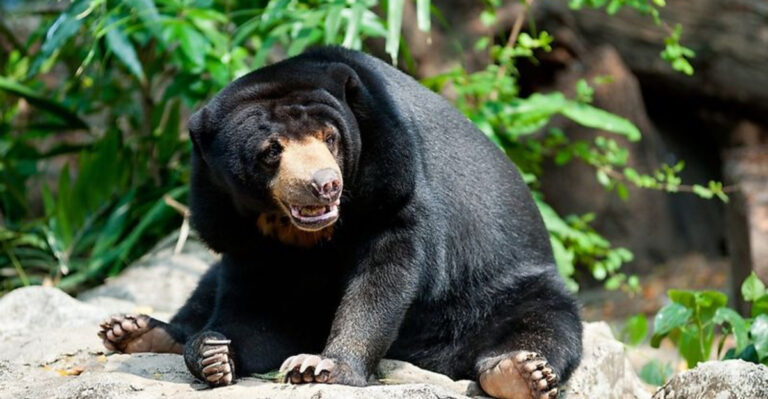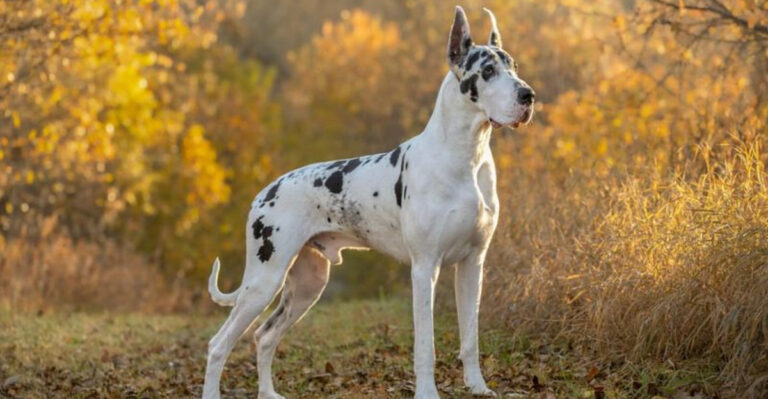Here’s How To Identify An Eastern Towhee
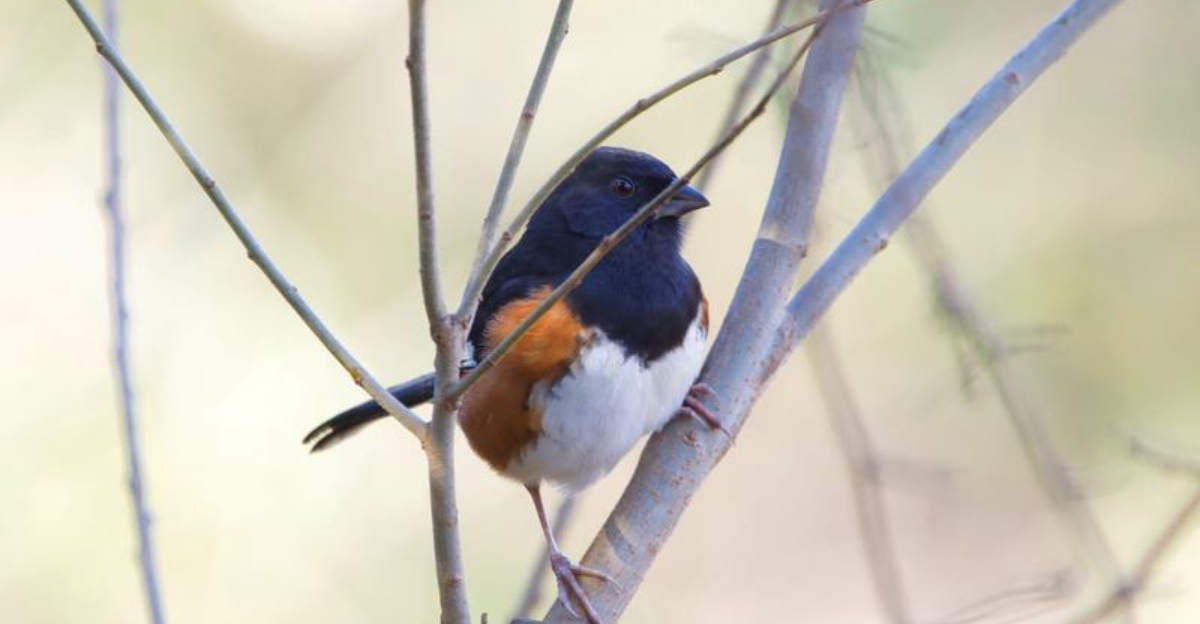
Identifying an Eastern Towhee can be an intriguing journey for bird enthusiasts. These vibrant birds are not only a treat for the eyes with their striking colors but also for the ears with their unique songs. Let’s explore some distinct aspects that can help you recognize these fascinating creatures.
1. What Does An Eastern Towhee Look Like?
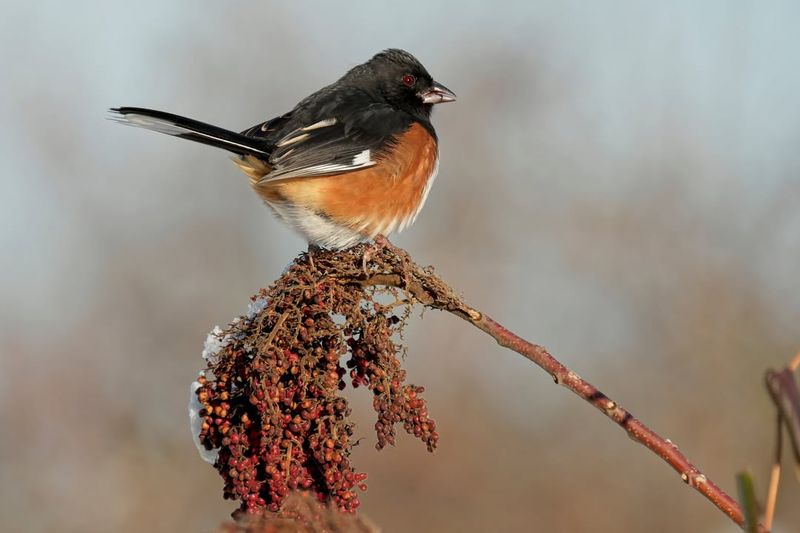
The Eastern Towhee is a striking bird known for its bold coloration. The males typically boast a black head, back, and tail with contrasting white underparts. Their sides are a rich rust color, making them quite distinguishable. Females, on the other hand, have a similar pattern but with brown replacing the black.
These birds are medium-sized, similar in size to a robin, but with a distinctive long tail. Their eyes are a striking red, though in some regions, you might find individuals with white eyes. This unique eye color is especially noticeable when the bird is perched quietly.
When observing these birds, pay attention to their stout, conical beak which is ideal for their seed-heavy diet. The Eastern Towhee’s appearance is not only a delight for bird watchers but also a useful guide for identification.
2. Are Eastern Towhees Considered Sparrows?
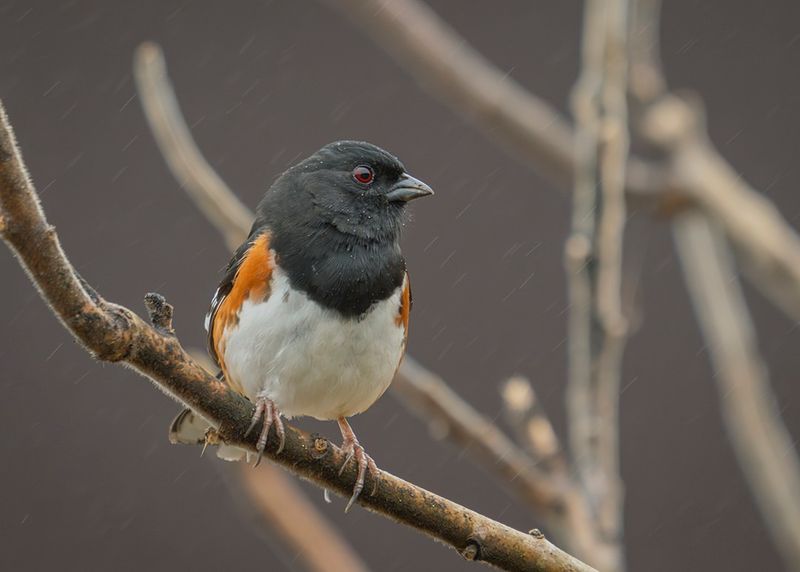
While Eastern Towhees share some similarities with sparrows, they are not categorized as such. Often mistaken due to their size and shape, Towhees belong to the family Passerellidae, distinguishing them from true sparrows.
Their bold coloration, particularly the males’ black and rust plumage, sets them apart from the generally drab-colored sparrows. This visual distinction, along with their unique song, makes them easily recognizable.
Additionally, Eastern Towhees have a different foraging behavior compared to sparrows. They tend to scratch the ground in search of food, a behavior known as “double-scratching,” which is not common among sparrows. This characteristic, combined with their striking appearance, helps bird enthusiasts confidently differentiate them from their sparrow cousins.
3. What Do Eastern Towhees Eat In The Wild?
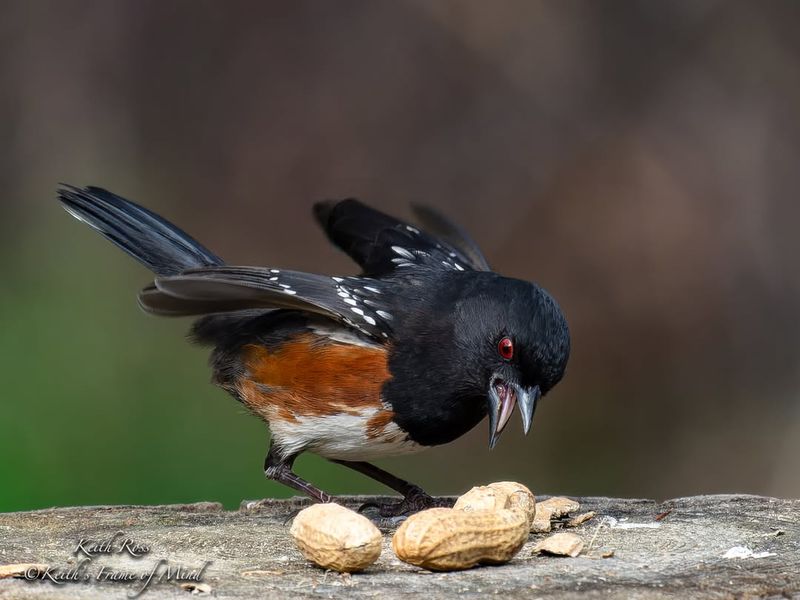
Eastern Towhees have a diverse diet that shifts with the seasons. In spring and summer, they primarily consume insects, spiders, and other small invertebrates, providing them with necessary protein for breeding and nurturing their young.
As the seasons change, so does their diet. In fall and winter, Towhees switch to eating a variety of seeds, fruits, and berries. They are particularly fond of acorns, small fruits, and the seeds of grasses and weeds. This seasonal adaptability in their diet helps them survive the colder months when insects are scarce.
To find their food, Eastern Towhees often forage on the ground, using their feet to scratch through leaf litter. This behavior, known as double-scratching, is a distinctive trait that also aids in identifying these birds. Their varied diet and unique foraging methods make them fascinating subjects for study.
4. How To Attract Eastern Towhees To Your Yard
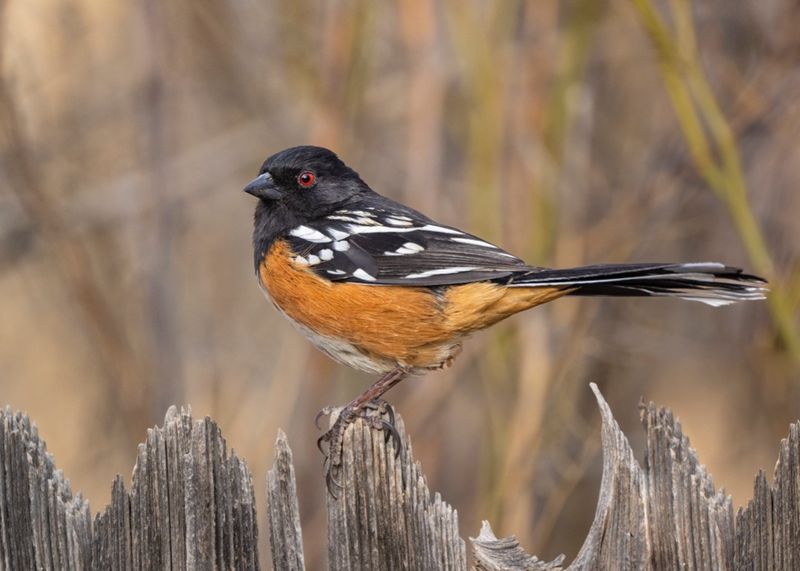
Attracting Eastern Towhees to your yard requires creating a welcoming environment that meets their needs. Start by planting native shrubs and bushes that provide both food and shelter. Dense thickets and hedgerows are especially appealing to these birds, offering them protection and nesting sites.
Consider adding a bird feeder stocked with seeds that Towhees favor, such as sunflower seeds and cracked corn. Placing the feeder near low bushes or ground cover can encourage them to visit, as they prefer foraging close to the ground.
Water is another essential element. A small bird bath or a shallow dish placed among your plantings can be a great attraction, giving them a place to drink and bathe. By providing food, shelter, and water, you can create an ideal habitat for Eastern Towhees in your backyard.
5. Where Can You Find Eastern Towhees?
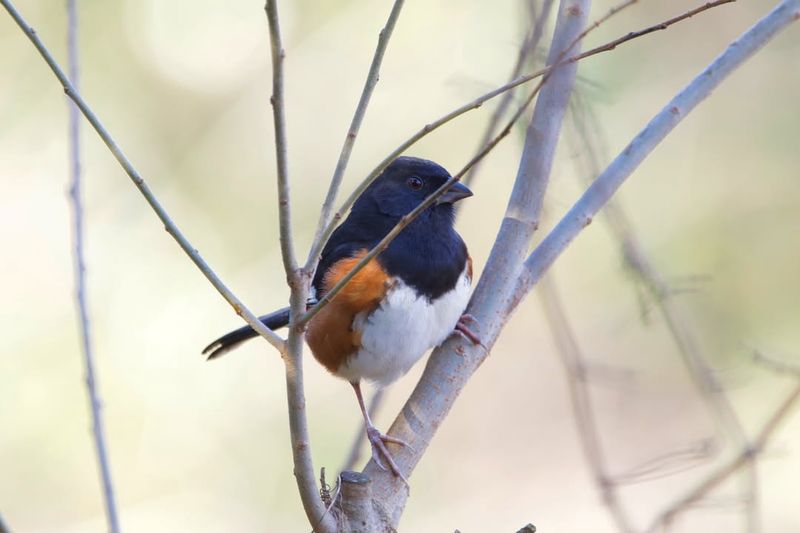
Eastern Towhees are predominantly found in the eastern parts of North America, from southern Canada down to Florida and Louisiana. They inhabit a variety of habitats, but they particularly thrive in open woodlands, overgrown fields, and areas with dense shrubs and thickets.
These birds are quite adaptable and may also be found in suburban areas where suitable vegetation exists. During the breeding season, they prefer dense undergrowth where they can build their nests hidden from predators.
In winter, some Towhees may migrate to the southeastern United States. However, many remain in their breeding territories year-round if the conditions are favorable. Their presence in a wide range of habitats makes them accessible to bird watchers across much of the eastern United States.
6. Understanding The Differences Between Male, Female, And Juvenile Towhees
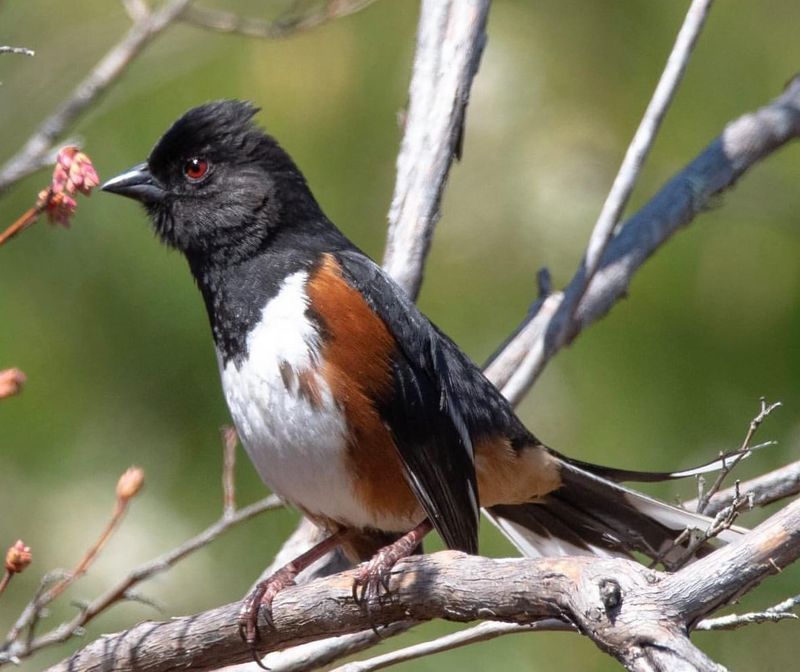
Distinguishing between male, female, and juvenile Eastern Towhees can enhance your bird-watching experience. Males are easy to identify with their striking black, white, and rusty-orange plumage. Their vibrant colors make them stand out, especially during the breeding season.
Females are similar in pattern but replace the black with a warm brown, giving them a more subdued appearance. This color difference is a classic example of sexual dimorphism, common in many bird species.
Juvenile Towhees, on the other hand, can be a bit trickier to spot. They often resemble adult females but with a streaked appearance due to their immature plumage. Observing these differences not only aids identification but also provides insight into the Towhee’s life stages.
7. The Distinctive Sounds Of An Eastern Towhee’s Song
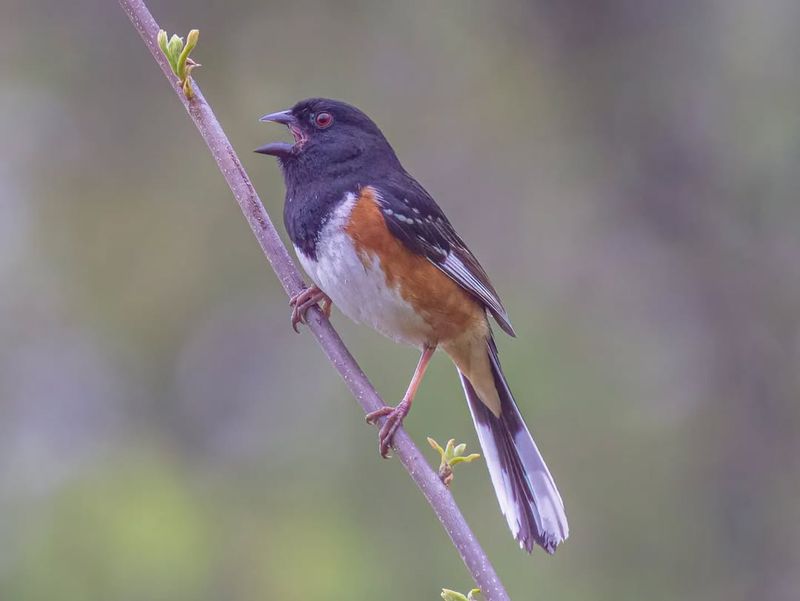
One of the most distinctive features of the Eastern Towhee is its song. It is often described as a “drink-your-tea” sound, with the first note being sharp and the last drawn out. This melodious tune is a common sound in their habitats, especially during the breeding season.
Males are the primary singers, using their songs to establish territory and attract mates. Their vocalizations are not only beautiful but also serve an essential role in communication within the species.
Listening for these calls can be a reliable way to locate Eastern Towhees, even if they are hidden in dense foliage. Bird watchers often rely on these audio cues to identify and enjoy the presence of these elusive yet melodious birds.
8. How To Spot An Eastern Towhee In Its Natural Habitat
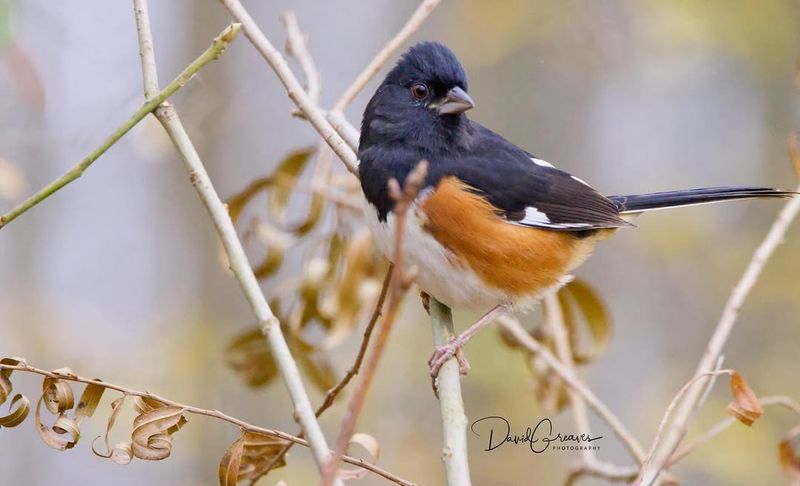
Spotting an Eastern Towhee in its natural habitat requires patience and keen observation skills. These birds are often found in dense underbrush, making them somewhat elusive. However, their bold colors and distinctive behaviors can give them away.
Look for movements low to the ground as they scratch through leaf litter. This behavior is a clear indicator of their presence. Listening for their unique song is another effective method to locate them.
Early morning and late afternoon are the best times to observe Eastern Towhees as they are most active during these periods. Approaching quietly and maintaining a respectful distance can improve your chances of a successful sighting, allowing you to enjoy these beautiful birds in their natural environment.
9. The Importance Of Habitat For Eastern Towhee Survival
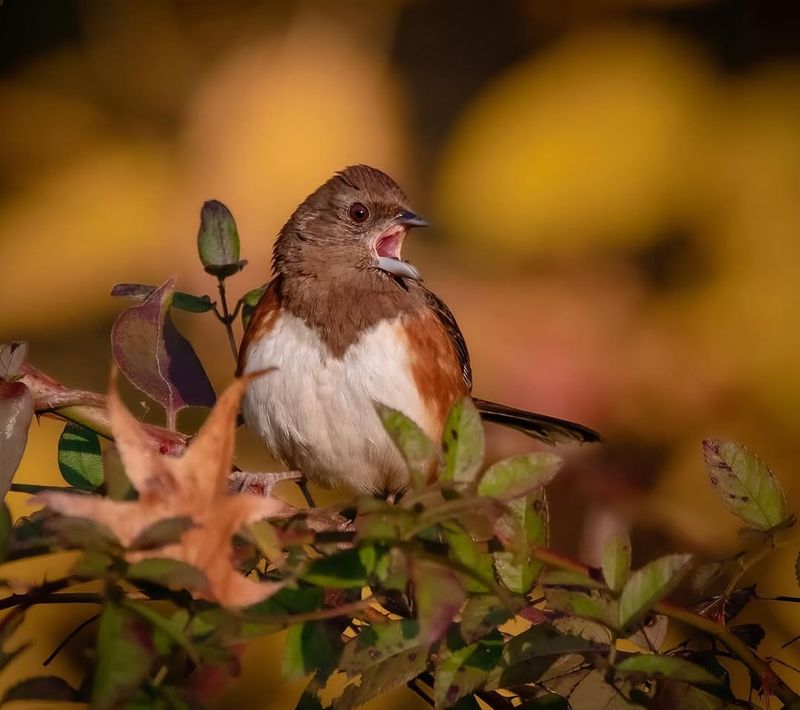
The survival of Eastern Towhees is closely tied to their habitat. These birds thrive in areas with dense undergrowth, which provides essential cover and nesting sites. The presence of shrubs and bushes is crucial for their protection against predators and harsh weather.
As urban development continues to alter landscapes, preserving natural habitats becomes increasingly vital for their survival. Conservation efforts focused on maintaining and restoring these environments are critical in supporting healthy Towhee populations.
By understanding the importance of habitat, bird enthusiasts and conservationists can work together to create and protect spaces that meet the needs of Eastern Towhees, ensuring their presence for future generations to enjoy.
10. Recognizing Eastern Towhees By Their Behavior
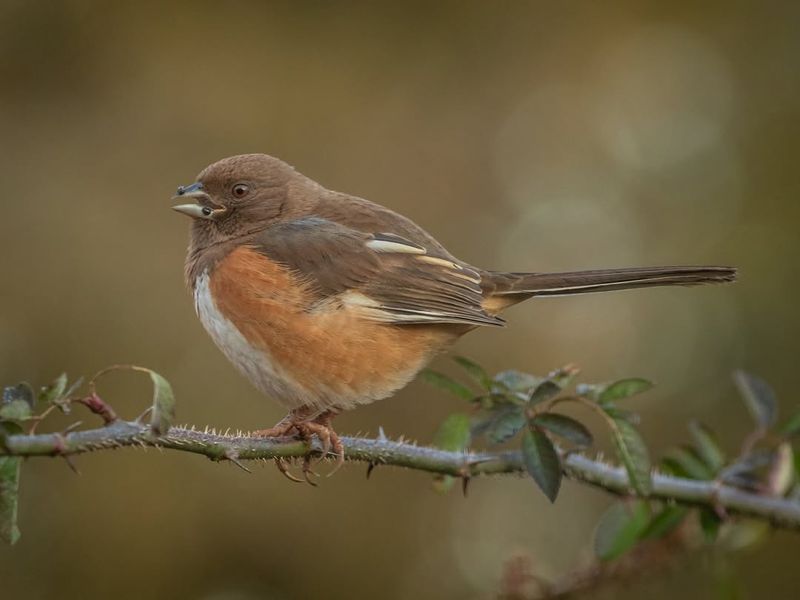
Behavior is a key aspect of identifying Eastern Towhees. One of their most distinctive behaviors is “double-scratching,” where they use both feet to scratch the ground in search of food. This action is not only unique but also quite effective in uncovering hidden seeds and insects.
Observing their interactions with other birds can also provide clues. Towhees are generally solitary or found in pairs, particularly during the breeding season. They are known for their territorial nature, often defending their space vigorously.
By paying attention to these behaviors, bird watchers can gain a deeper understanding of Eastern Towhees, enhancing their bird-watching experiences and appreciating the subtle nuances of these captivating birds.




